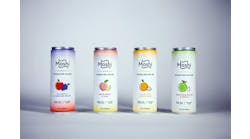There’s a lot of talk that most fortunes are made during economic downturns. Food & beverage companies must be heeding that advice because, while we expected to paint a glum picture of product development priorities for 2009, the data from our annual R&D Survey indicate otherwise.
While last year fewer than a third of respondents indicated new product development would be the most important target of R&D efforts, this year the figure jumped to nearly half — 48 percent. In second place for 2009 is existing product improvement, at 30 percent.
When you look at the money going into R&D, the above numbers make sense. As a new question for 2009, we asked the blunt “What’s happened to your R&D dept. budget this year?” Nearly three-quarters are, smartly, maintaining (58 percent) or even increasing (14 percent) R&D budgets. Only 28 percent have had their budgets cut.
We sent survey links by e-mail in March to Food Processing readers who cover both administrative and R&D titles, plus opened links to same on our web site and in the magazine. The 356 respondents included vice presidents of research and/or R&D, research directors, directors of quality control/assurance, marketing directors and management.
Of all respondents, about two-thirds were from privately held companies, one-third public firms (same as last year). They were divided fairly evenly among makers of:
- Bakery Products (23%)
- Beverages (Non-Dairy; 19%)
- Confectionery Products (15%)
- Dairy Products and Beverages (15%)
- Frozen Products (21%)
- Fruits & Vegetables (14%)
- Further Processed Foods (19%)
- Grain Products/Milling (14%)
- Health and wellness, power, energy products (15%)
- Meat, Poultry, Seafood (20%)
- Snacks (20%)
- Spice blends, Flavorings, Condiments (15%)
- Value-Added Products (29%)
Note: These values total above 100 percent due to manufacturers involved in equal amounts of different product categories.
One-third of respondents reported company annual sales in 2008 of less than $10 million; 12 percent were from companies with $10-25 million in sales, 13 percent with sales of $26-100 million, 13 percent with sales of $101-500 million and 29 percent with sales of greater than $501 million.
Some of the responses included verbatim comments, plus personal interviews were conducted with those who provided contact information. As with all Food Processing surveys, personal information is kept strictly confidential and is used only for research purposes.
Here’s where food & beverage processors are far smarter in Economics 101 than any banker or broker. The best time for growth is actually during a downturn, because money and other resources are cheap and your competitors are retrenching. This shows it’s not just a fluke food companies have been weathering the economic implosion better than those in almost any other industry.
Top issues impacting R&D strategy this year are food safety (No. 1 with 54 percent of respondents, with a weighted score of 5.13), manufacturing cost reduction (score of 4.29), organic/natural (3.31), preventive health (2.97), sustainable/eco-friendly (2.82) and palliative health (2.47).
Despite the above good news on new product development, a touch of caution showed up in a later, similar question. That earlier one asked “Which of the following will be most important this year?” This second question asked “Which of the following tasks is your R&D team most used for?” Last year, 90 percent said they were devoted to new product development, 84 percent to product improvement/reformulation and 50 percent to making prototypes. For 2009, the emphases are 63 percent for product improvement/reformulation, 62 percent toward new product development and 23 percent toward making prototypes.
On the flip side, devoting R&D energies to cost-cutting actually dropped — significantly — to a little more than a third (39 percent) compared to last year being greater than half (53 percent). But that’s still a lot of effort going into slashing expenses.
(Note: Of all the cost-cutting strategies noted in the responses, perhaps the most unusual — and intriguing, if it works — came from a Paraguayan company connected to the Universidad Naçional de Asunción. It will try to extract phytochemicals from vegetable waste.)
Who’s the decision-maker?
Once again, 70 percent of respondents to our survey report a centralized, corporate level decision-making process regarding new product development, leaving 30 percent reporting new product development decisions are the realm of individual business units or others lower on the totem pole.
Two-thirds of companies responding still have a formal product development team. That team also still is predominantly R&D, followed by Marketing, then Manufacturing and Management, with the remaining titles holding their same positions as before.
Breaking down which departments set product development goals showed but slight change over last year. Corporate brass and management (CEO/CFO/President and General Management) held the reins a little tighter, primary goal-setters for 92 percent of teams versus 89 percent last year. As a result, R&D’s power slipped from 81 percent to 74 percent and Marketing/Sales from 72 to 66 percent.
In answering “Does it fit our brand?” Marketing and Top Brass divvied things up evenly, sharing 63 percent of that decision; last year Marketing was on top by a couple percentage points. Marketing still decides if a product or reformulation fits the marketing strategy, and of course the “Can we make money?” question is still the realm of the head honchos — with one odd exception: This year, outside suppliers influenced that decision for 44 percent of respondents, putting them ahead of even internal R&D and Plant Ops people. Hmmm. This is significant, implying a stronger role for suppliers in the economics of new product/formulation decisions.
We also asked for the first time this year who gets to specify packaging. It yielded a mildly unexpected answer: For nearly two-thirds of companies, Manufacturing Operations leads the decision on packaging, not Marketing and Sales. In fact, fewer than half (46 percent) let marketers lead on that important aspect of how a product looks.
Suppliers have moved to the forefront in another aspect of R&D. When it comes to sourcing the information crucial to ongoing product development or reformulation, the ingredient people slimly edged out internal research and focus groups, with the former going from 63 to 67 percent and the latter dropping from 71 to 66 percent.
But as for identifying new product ideas, internal research and focus groups still rule at 85 percent (though down from 92 percent last year). Suppliers again showed their muscle coming in No. 2 with 42 percent, and nearly one-fourth — 24 percent — turn to an external product-development company.
Coming down the pipeline
The “big, big issues” for the coming years — chasing consumer trends, healthier/better-for-you foods, modification/reformulation, regulatory issues, etc. — showed few changes over last year’s answers, but the changes were telling ones and appear closely related to the economy.
“Going green” fell from 33 to 24 percent; “going global” from 21 to a mere 8 percent. Modification/reformulation (includes reformulation for health) fell somewhat, from 44 to 37 percent and line extension from 26 to 19 percent. Outsourcing, too, became less of an issue, dipping from 13 to less than 9 percent. And focusing on consumers trends is suddenly, albeit not surprisingly, more important. That figure jumped from under 39 percent to over 51 percent. This was the highest score for any of the above issues.
The increased urgency of minding the consumer is supported by comments such as:
- We are trying to figure out what the consumer really wants before they know they want it or need it” (from a senior product developer working at a large, multinational company on the East Coast).
- (We’re) improving existing products to meet consumer requirements” (a grain products miller and manufacturer based in the U.K.).
- (We plan to) focus on development of customer-requested new products” (from a snack product manufacturer for a $50 million company).
- And the more proactive (not to mention aggressive) comment from a small manufacturer of further-processed foods, “(We’re focusing on) changing consumer lifestyle.
In spite of these shifts, making healthier/better-for-you foods and beverages, or modifying or reformulating for same, certainly follows consumer trends.
With layoffs at the forefront of so much economic news, it’s surprising the topic did not come up as much as we thought it would. But labor issues weren’t altogether absent, nor the damage that rash decisions can bring. “Our company has let a significant number of workers go without replacing the knowledge base,” says one understandably anonymous respondent from a half-billion dollar, global fruit and fruit-beverage corporation.
Following mention of the company’s “aggressive” restructuring plan and the “high percentage of staff laid off,” the writer notes the company is “bringing in people from non-food industries — for example, the head of Quality Control! — who don't understand the industry and so make poor decisions.” The result: “A huge knowledge gap, lots of pain and suffering, upper management disconnected from the educated workers, all accompanied by a ‘fire the messenger’ attitude.”
What the next few years will bring for the food industry is hard to gauge. The financial situation is going to get worse before it gets better, according to all wonks. But the economy-defying basic principle of “people gotta eat” is likely to continue to balance that out. All signs indicate this is a perfect time for food and beverage companies to put more money and effort into R&D and come up with the next generation of enticing and healthful foods and drinks.


